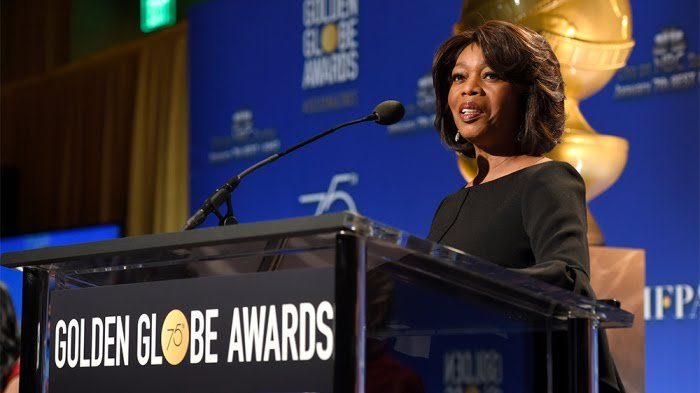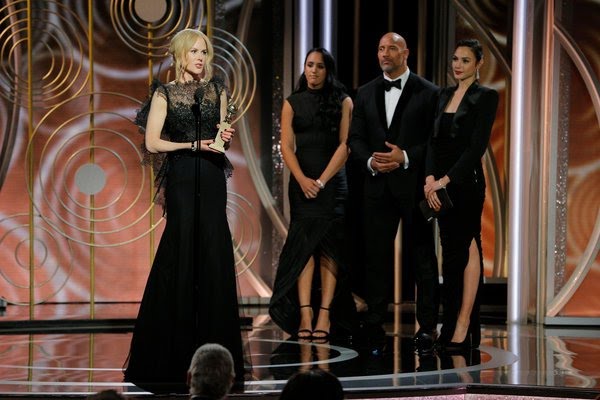(This article brings a skeptical perspective to the much-hyped “dress code activism” that has recently turned award shows like The Golden Globes into into high profile sites of symbolic outrage. Ms. Camacho doubts that wearing a specific color or pin demonstrates a meaningful commitment to a cause, and explores the question: Is this trend sincere or does it simply indicate a Hollywood fetish for shallow protest?)
By Sadie Camacho
On January 7, 2018, the 75th annual Golden Globe Awards were televised around the world. Naturally, any awards program catering to Hollywood and its byproducts would be expected to address major issues in Hollywood at the time. In this case, the industry’s political focus included the various sexual assault scandals in the news over the past few months. Many individuals, both male and female, took this event as an opportunity to begin a wider conversation on sexual assault. In order to do this, award show attendees decided to adopt all-black attire, visually adapting the concept of “power dressing” that refers to style/aesthetic in the fashion world which promoted the idea that women must act and dress like a man to work alongside men. Organizers of this strategy of “dress to object” may have thought merely seeing high-profile participants in this visible “protest” would spin the patriarchy and its conspirators on their heads. But, in an event so rife with chances for debate, was color-coordinating their outfits really the best use of energy?
As a trans Afro-Latina I have experienced threefold the importance of protest, both verbally and physically. Martin Luther King Jr. believed in nonviolent protest. Rosa Parks and many other black women used their actions to upset the capitalist facets of oppressive systems. Malala Yousafzai spoke out against the forces that denied her and girls like her their right to an education, forces that almost took her life. None of these protests were violent, but all were undeniably effective. Other public rebellions, such as Stonewall, Ferguson, and the Detroit Riots of 1967 are all examples of violent protests that have resulted in a lasting legacy and genuine change. It is because of these aforementioned examples of effective methods of protest that I question the necessity and effectiveness of passive and, quite frankly, lackadaisical protesting in the form of “power dressing”.
The oppression of women is woven throughout society, and part of it is found within the fashion industry. The depiction of women as objects, various accounts of physical and mental violence, and the systematic degradation of the female individual are all prime examples of this. So therefore, how exactly does arriving in high-end outfits from the industry’s best and brightest designers fight against this system? Attending the award show celebrating the same oppressive industry you are trying to destroy, counts less as protest and more as mere posturing.
This is not to say that there were not those who went above and beyond the dress protocol. Natalie Portman and Oprah Winfrey’s scalding speeches, both brought to light the plight of women in every industry. Many men, even, showed up and out in support of the movement. But the concept that simply dressing in black, regurgitating the same, shallow rhetoric which often fails to add to the conversation, and tweeting a hashtag, is worthy of applause and recognition is what I fear will kill this movement, and ultimately, all movements like it. Passive conversation is not conversation at all; it is the death of conversation and the burning of social pedagogies.
{ *Title above is taken from a famous science fiction story by Harlan Ellison (r) }

